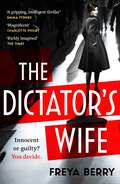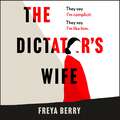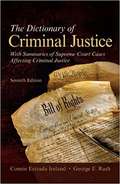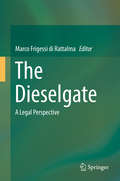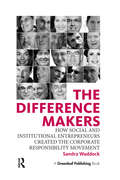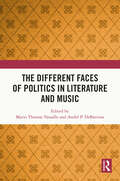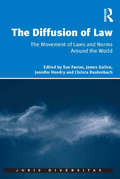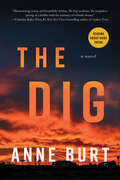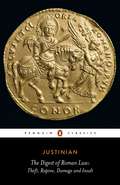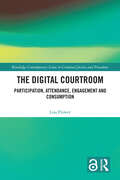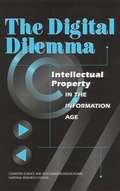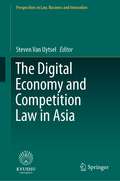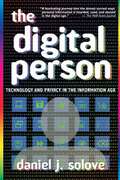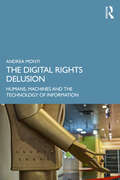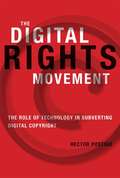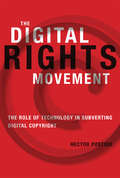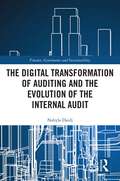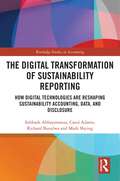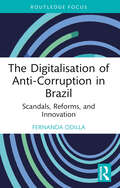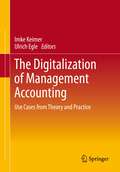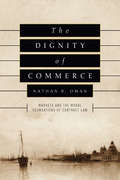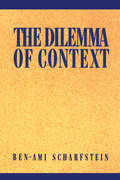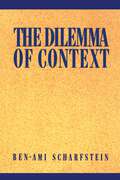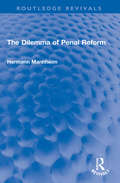- Table View
- List View
The Dictator's Wife: Behind her smile lies a secret. The most darkly gripping debut novel of 2022
by Freya Berry'I am not my husband. I am innocent. Do you believe me?'The beautiful, enigmatic wife of a feared dictator stands trial for her late husband's crimes against the people. The world will finally know the truth. But whose? 'A gripping, intelligent, utterly-of-the-moment thriller' EMMA STONEX, bestselling author of The Lamplighters'Compelling, atmospheric... It's BRILLIANT' MARIAN KEYES, bestselling author of Again, Rachel'A sumptuously written story, which demands to be devoured in one sitting' GLAMOUR, Top 30 Books Coming in 2022__________WOMANI learned early in life how to survive. A skill that became vital in my position.WIFEI was given no power, yet I was expected to hold my own with the most powerful man in the country.MOTHER OF THE NATIONMy people were my children. I stood between him and them.I am not the person they say I am.I am not my husband.I am innocent.Do you believe me?Visceral and thought provoking, haunting and heartbreaking, The Dictator's Wife will hold you in its grip until its powerful conclusion, and keep you turning the pages long into the night.__________'A remarkable new talent' ANTHONY HOROWITZ, bestselling author of A Line to Kill'A gripping and moving debut from a talent to watch' HARLAN COBEN'One of the most compelling literary debuts of the year' GLAMOUR 'An unconventional legal thriller and absorbing debut that is as satisfyingly complex in both its plotting and moral conclusions' EXPRESS'This book is magnificent' CHARLOTTE PHILBY, bestselling author of A Double Life'A captivating story of women's power, love and secrets. As timely and profound as it is unforgettable. The ending left me breathless' LARA PRESCOTT, New York Times bestselling author of The Secrets We Kept'A fascinating exploration of absolute power, female agency and the complexities of complicity. Atmospheric, claustrophobic and so elegantly written' ELLERY LLOYD'A darkly atmospheric, rich, compulsive and page-turning read' KATE HAMER'One of the most original debuts I have read' DAISY GOODWIN'Excellent. Horrifying and immersive with strong characterisation and atmosphere' HARRIET TYCE'Engrossing, evocative, chillingly claustrophobic. Wonderfully written' KAREN HAMILTON'A thrilling novel' OLIVIA VINALL
The Dictator's Wife: The darkly gripping BBC2 Between the Covers Book Club Pick
by Freya Berry'I am not my husband. I am innocent. Do you believe me?'The beautiful, enigmatic wife of a feared dictator stands trial for her late husband's crimes against the people. The world will finally know the truth. But whose?'A gripping, intelligent, utterly-of-the-moment thriller' EMMA STONEX, bestselling author of The Lamplighters'A remarkable new talent' ANTHONY HOROWITZ, bestselling author of A Line to Kill'This book is magnificent' CHARLOTTE PHILBY, bestselling author of A Double Life__________WOMANI learned early in life how to survive. A skill that became vital in my position.WIFEI was given no power, yet I was expected to hold my own with the most powerful man in the country.MOTHER OF THE NATIONMy people were my children. I stood between him and them.I am not the person they say I am.I am not my husband.I am innocent. Do you believe me?Visceral and thought provoking, haunting and heartbreaking, The Dictator's Wife will hold you in its grip until its powerful conclusion and keep you turning the pages long into the night...__________'A captivating story of women's power, love and secrets. As timely and profound as it is unforgettable. The ending left me breathless' LARA PRESCOTT, New York Times bestselling author of The Secrets We Kept'A gripping and moving debut from a talent to watch' HARLAN COBEN'A fascinating exploration of absolute power, female agency and the complexities of complicity. Atmospheric, claustrophobic and so elegantly written' ELLERY LLOYD'A darkly atmospheric, rich, compulsive and page-turning read' KATE HAMER'One of the most original debuts I have read' DAISY GOODWIN'Excellent... Horrifying and immersive with strong characterisation and atmosphere' HARRIET TYCE'Engrossing, evocative, chillingly claustrophobic and wonderfully written' KAREN HAMILTON'A thrilling novel' OLIVIA VINALL(P)2022 Headline Publishing Group Limited
The Dictionary Of Criminal Justice
by George Rush Connie IrelandThe Dictionary of Criminal Justice, Seventh Edition, brings together in one, easy-to-use guide more than 3,600 definitions from the many disciplines that compose the field of criminal justice―including U.S. and English common law, penology, psychology, law enforcement, political science, and business administration. The volume also features summaries of nearly 1,000 key U.S. Supreme Court rulings affecting criminal justice, an appendix of juried academic journals, and a new appendix compilation of websites in the field. Links to CRIMINAL JUSTICE websites are included
The Dieselgate
by Marco Frigessi di RattalmaThis book explains, compares and assesses the legal implications of Dieselgate within a range of selected jurisdictions and at the EU, international and comparative law level. The book analyses the US EPA-VW $14. 7 billion dollar settlement of 2016, one of the largest civil settlements in the history of environmental law. As it shows, the Dieselgate affair has raised a host of issues concerning corporate and social responsibility, tort liability, environmental liability, contractual defective products, warranty, and false environmental claims in a range of jurisdictions. Issues like repurchasing or retrofitting cars from consumers and making direct payments to consumers through car buy-backs and compensation are analysed. Further, the book relates how Dieselgate has also contributed to the discussion about the introduction of more effective collective measures of redress for consumers, such as class actions, in Germany, France, Italy and the UK. The book subsequently reviews the criminal offences Volkswagen is currently confronted with in Germany, France and Italy, i. e. fraud and manipulation of capital markets (by belatedly providing shareholders with essential information relevant for the share value), and, potentially, environmental crimes. It demonstrates how Dieselgate has sparked new debates in Germany, Italy, France and the UK about the need to introduce enterprise liability for organised crimes, lack of compliance and control structures, and intentional violations of the law. Lastly, the book discusses how EU law has sought to respond to Dieselgate and thus investigates the controversial EU Regulation No. 2016/646 introducing a "temporary conformity factor" of 2. 1 (equivalent to a 110% increase on the current limit) to be applied for NOx in the new RDE testing cycle, and the works of the EU committee of inquiry into Emissions Measurements in the Automotive Sector (EMIS).
The Difference Makers: How Social and Institutional Entrepreneurs Created the Corporate Responsibility Movement
by Sandra WaddockIt is not often that we have the opportunity to hear from the early pioneers of a social movement about how it grew and evolved, but that is exactly what this book sets out to do. The Difference Makers tells the stories of 23 entrepreneurs who have been instrumental in developing corporate responsibility; offers an analysis of how CSR has emerged as a key business issue, why it has evolved so quickly, and the visions of its thought leaders.The book examines 23 of the key players who have been instrumental in developing the corporate responsibility movement. They include John Ruggie and the Global Compact, Allen White and the Global Reporting Initiative, John Elkington and SustainAbility, Simon Zadek and AccountAbility, Alice Tepper Marlin and Social Accountability International, Bob Dunn and Business for Social Responsibility, and Joan Bavaria and Ceres – along with many others. The Difference Makers is a history and detailed analysis of how corporate responsibility has emerged as a key political, social, and business issue, why it has evolved so quickly, and what the visions of its thought leaders are for the future. It is essential reading for academics, business people and all those interested in the future of the corporation.
The Different Faces of Politics in Literature and Music
by Mario Thomas Vassallo André P. DeBattistaThis book highlights the links between politics and governance and the arts. The essays in the volume show how literature and music have challenged those in power risking political censure. In addition, they also try to delineate how patronage has been used for propaganda, or to stir up national fervour. They focus on the tension and symbiosis between the politician and the artist foregrounding how they have always tried to influence, challenge, and, in some cases, undermine one another. This volume will serve as an indispensable source for researchers and academics in political science, the humanities and performing arts.
The Diffusion of Law: The Movement of Laws and Norms Around the World (Juris Diversitas)
by Sue Farran James Gallen Christa RautenbachIn considering diffusion from a global perspective, this book provides timely new insights into its application in a variety of fields and at many levels of both legal and non-legal orderings. This collection contributes to the wider theoretical debate concerning the movement of law and legal norms by engaging with concrete examples of legal diffusion, in jurisdictions as diverse as Albania, the Czech Republic, Poland and Kuwait. These examples, taken together, provide a comprehensive illustration of the theoretical debates concerning the diffusion of laws and norms in terms of both process and form. This international, multi-disciplinary and multi-methodological volume brings together scholars from law and social science with experience in mixed and hybrid jurisdictions, and advances the conversation about legal and normative diffusion across the academy. It represents a robust challenge to many preconceived ideas about legal movement and, as such, will be of interest to academics and students working in the fields of Law, Sociology, Anthropology, Political Science, Legal Education and comparative method.
The Dig: A Novel
by Anne BurtWhen Sarajevo-born siblings Antonia and Paul join a wealthy Midwestern family in the 1990s, a series of events with deadly consequences is set in motion. Now, with her career on the line and her brother missing, Antonia must race against the clock to confront long-buried family secretsAntonia King has a complicated relationship with the past. She and her brother were found amid the rubble of a bombed-out apartment in Sarajevo and taken in by a family of contractors in Thebes, Minnesota. Eager to escape the constraints of her adopted town, Antonia embarks on a high-powered legal career. But it isn&’t long before her brother&’s mysterious disappearance pulls her back home. There, over the course of a single day, Antonia unearths decades of secrets and lies, leading to shocking revelations about her adoptive family—and the sinister truth behind her biological mother&’s death—that will alter the course of her life and change her definition of family forever.Informed by timely issues of immigration, capitalism, and justice, yet timeless in its themes of love, identity, and competing loyalties, The Dig, inspired by the Greek tragedy Antigone, portrays a woman at odds with her history, forced to choose between her own ambitions and her loyalty to her beloved, idealistic brother.
The Digest of Roman Law: Theft, Rapine, Damage and Insult
by JustinianCodified by Justinian I and published under his aegis in A.D. 533, this celebrated work of legal history forms a fascinating picture of ordinary life in Rome.
The Digital Courtroom: Participation, Attendance, Engagement and Consumption (Routledge Contemporary Issues in Criminal Justice and Procedure)
by Lisa FlowerThe digitalisation of courtrooms brings both opportunities and challenges to the judicial process, shaping our understandings of trials and their participants in a myriad of, at times, unexpected ways, and transforming how we participate in, attend, engage with, and consume trials. While digital tools offer potential benefits, they can also impact core aspects of judicial integrity, such as the conduct of legal proceedings and participants’ experiences, as well as introducing additional layers of complexity – sometimes problematic – in how trials are portrayed in popular culture. By exploring these developments, the book highlights the importance of a thoughtful approach to digital integration – one that carefully considers its implications for procedural fairness, public trust, and the perceived legitimacy of the legal system. The author examines the social construction of courts in the digital age, arguing that digitalisation is not merely transforming the tools of justice but also redefining the very essence of the justice experience and reshaping our perceptions of trials and their participants. The work will be a valuable resource for scholars and students in the social sciences, law and all those interested in digitalisation and society.
The Digital Dilemma: Intellectual Property in the Information Age
by National Research CouncilImagine sending a magazine article to 10 friends-making photocopies, putting them in envelopes, adding postage, and mailing them. Now consider how much easier it is to send that article to those 10 friends as an attachment to e-mail. Or to post the article on your own site on the World Wide Web.The ease of modifying or copying digitized material and the proliferation of computer networking have raised fundamental questions about copyright and patent--intellectual property protections rooted in the U.S. Constitution. Hailed for quick and convenient access to a world of material, the Internet also poses serious economic issues for those who create and market that material. If people can so easily send music on the Internet for free, for example, who will pay for music?This book presents the multiple facets of digitized intellectual property, defining terms, identifying key issues, and exploring alternatives. It follows the complex threads of law, business, incentives to creators, the American tradition of access to information, the international context, and the nature of human behavior. Technology is explored for its ability to transfer content and its potential to protect intellectual property rights. The book proposes research and policy recommendations as well as principles for policymaking.
The Digital Economy and Competition Law in Asia (Perspectives in Law, Business and Innovation)
by Steven Van UytselThe digital economy, broadly defined as the economy operating on the basis of interconnectivity between people and businesses, has gradually spread over the world. Although a global phenomenon, the digital economy plays out in local economic, political, and regulatory contexts. The problems thus created by the digital economy may be approached differently depending on the context. This edited collection brings together leading scholars based in Asia to detail how their respective jurisdictions respond to the competition law problems evolving out of the deployment of the digital economy. This book is timely, because it will show to what extent new competition law regimes or those with a history of lax enforcement can respond to these new developments in the economy. Academics in law and business strategies with an interest in competition law, both in Asia and more broadly, will find the insights in this edited collection invaluable. Further, this volume will be a key resource for scholars, practitioners and students.
The Digital Person: Technology and Privacy in the Information Age (Ex Machina: Law, Technology, and Society #1)
by Daniel J SoloveA startling account of personal data dossiers and the newest grave threat to privacySeven days a week, twenty-four hours a day, electronic databases are compiling information about you. As you surf the Internet, an unprecedented amount of your personal information is being recorded and preserved forever in the digital minds of computers. For each individual, these databases create a profile of activities, interests, and preferences used to investigate backgrounds, check credit, market products, and make a wide variety of decisions affecting our lives. The creation and use of these databases—which Daniel J. Solove calls “digital dossiers”—has thus far gone largely unchecked. In this startling account of new technologies for gathering and using personal data, Solove explains why digital dossiers pose a grave threat to our privacy.The Digital Person sets forth a new understanding of what privacy is, one that is appropriate for the new challenges of the Information Age. Solove recommends how the law can be reformed to simultaneously protect our privacy and allow us to enjoy the benefits of our increasingly digital world.This is the first volume in the series EX MACHINA: LAW, TECHNOLOGY, AND SOCIETY.
The Digital Public Domain: Foundations for an Open Culture
by Melanie Dulong de Rosnay and Juan Carlos De MartinDigital technology has made culture more accessible than ever before. Texts, audio, pictures and video can easily be produced, disseminated, used and remixed using devices that are increasingly user-friendly and affordable. However, along with this technological democratization comes a paradoxical flipside: the norms regulating culture's use—copyright and related rights—have become increasingly restrictive. <p><p> This book brings together essays by academics, librarians, entrepreneurs, activists and policy makers, who were all part of the EU-funded Communia project. Together the authors argue that the Public Domain—that is, the informational works owned by all of us, be that literature, music, the output of scientific research, educational material or public sector information—is fundamental to a healthy society. <p> The essays range from more theoretical papers on the history of copyright and the Public Domain, to practical examples and case studies of recent projects that have engaged with the principles of Open Access and Creative Commons licensing. The book is essential reading for anyone interested in the current debate about copyright and the Internet. It opens up discussion and offers practical solutions to the difficult question of the regulation of culture at the digital age.
The Digital Rights Delusion: Humans, Machines and the Technology of Information
by Andrea MontiThis book examines the ever-increasing impact of technology on our lives and explores a range of legal and constitutional questions that this raises. It considers the extent to which concepts such as 'cyberspace' and 'digital rights' advance or undermine our understanding of this development and proposes a number of novel approaches to the effective protection of our rights in this rapidly evolving environment. Finally, it shows how the abuse of the adjective digital has demoted legal rights into subjective and individual claims. The work will be of particular interest to scholars of privacy, artificial intelligence and free speech, as well as policymakers and the general reader.
The Digital Rights Movement
by Hector PostigoThe movement against restrictive digital copyright protection arose largely in response to the excesses of the Digital Millennium Copyright Act (DMCA) of 1998. In The Digital Rights Movement, Hector Postigo shows that what began as an assertion of consumer rights to digital content has become something broader: a movement concerned not just with consumers and gadgets but with cultural ownership. Increasingly stringent laws and technological measures are more than incoveniences; they lock up access to our "cultural commons. " Postigo describes the legislative history of the DMCA and how policy "blind spots" produced a law at odds with existing and emerging consumer practices. Yet the DMCA established a political and legal rationale brought to bear on digital media, the Internet, and other new technologies. Drawing on social movement theory and science and technology studies, Postigo presents case studies of resistance to increased control over digital media, describing a host of tactics that range from hacking to lobbying. Postigo discusses the movement's new, user-centered conception of "fair use" that seeks to legitimize noncommercial personal and creative uses such as copying legitimately purchased content and remixing music and video tracks. He introduces the concept of technological resistance--when hackers and users design and deploy technologies that allows access to digital content despite technological protection mechanisms--as the flip side to the technological enforcement represented by digital copy protection and a crucial tactic for the movement.
The Digital Rights Movement: The Role of Technology in Subverting Digital Copyright (The Information Society Series)
by Hector PostigoThe evolution of activism against the expansion of copyright in the digital domain, with case studies of resistance including eBook and iTunes hacks.The movement against restrictive digital copyright protection arose largely in response to the excesses of the Digital Millennium Copyright Act (DMCA) of 1998. In The Digital Rights Movement, Hector Postigo shows that what began as an assertion of consumer rights to digital content has become something broader: a movement concerned not just with consumers and gadgets but with cultural ownership. Increasingly stringent laws and technological measures are more than incoveniences; they lock up access to our “cultural commons.”Postigo describes the legislative history of the DMCA and how policy “blind spots” produced a law at odds with existing and emerging consumer practices. Yet the DMCA established a political and legal rationale brought to bear on digital media, the Internet, and other new technologies. Drawing on social movement theory and science and technology studies, Postigo presents case studies of resistance to increased control over digital media, describing a host of tactics that range from hacking to lobbying.Postigo discusses the movement's new, user-centered conception of “fair use” that seeks to legitimize noncommercial personal and creative uses such as copying legitimately purchased content and remixing music and video tracks. He introduces the concept of technological resistance—when hackers and users design and deploy technologies that allows access to digital content despite technological protection mechanisms—as the flip side to the technological enforcement represented by digital copy protection and a crucial tactic for the movement.
The Digital Transformation of Auditing and the Evolution of the Internal Audit (Finance, Governance and Sustainability)
by Nabyla DaidjThe main objective of this book is to provide both academics and practitioners with a global vision of the evolution of internal auditing in a fast-changing business landscape driven by digital transformation. Digital transformation has been first associated with the emergence and the development of new technologies (artificial intelligence, blockchain, cloud computing, data analytics, predictive analytics, robotic process automation, IOT, drones etc.). Beyond the technological dimensions, this transformation has several impacts on businesses, organizations and processes and raises several questions for auditing activities. This book explores how digitalization not only has an impact on the audit environment, but also on internal audit practices and methodologies, information technology (IT)/information system (IS) audit, IT governance and risk management. The auditing profession also has to face the same challenges. Auditors should develop new skills. To continue to provide high quality service in such an environment, the methodologies, the process and the tools used for conducting an audit have progressively changed from those applied to the traditional audit. Internal audit, as a key strategic function, must evolve too. Finally, the book also investigates the impact of the COVID-19 pandemic on internal auditing. The author highlights the need for a new vision and renewed forecasting tools. The post-COVID-19 business and corporate world has changed. Internal audit, as a key strategic function, must evolve too.
The Digital Transformation of Sustainability Reporting: How Digital Technologies are Reshaping Sustainability Accounting, Data, and Disclosure (Routledge Studies in Accounting)
by Richard Busulwa Carol Adams Subhash Abhayawansa Mark ShyingAs global sustainability expectations intensify, digital technologies (DTs) are becoming essential tools for efficiently and effectively managing, measuring, and communicating sustainability performance and impact. This book unpacks how emerging and established DTs, from artificial intelligence and blockchain to cloud platforms and the Internet of Things, can transform sustainability reporting and data management, enhance decision‑making, and improve accountability across value chains.Drawing on insights from extensive interviews and cross‑sectional surveys of sustainability, accounting, auditing, data science and technology professionals, this book delivers a practical and evidence‑based roadmap of how DTs are being leveraged and could be better leveraged in internal and external sustainability reporting‑related activities. It explores how DTs can enhance the efficiency and effectiveness of collecting, analysing, and assuring sustainability‑related data, while also supporting scenario planning, target setting, and improving the accessibility and usability of disclosures for stakeholders. This book further examines the key drivers, opportunities, and challenges shaping the use of DTs in sustainability reporting and offers a valuable reference for practitioners and finance professionals through a concise mapping of relevant digital tools and platforms. It also explores the evolving roles and competencies required of accounting and finance professionals to effectively contribute to sustainability reporting and lead technology‑enabled sustainability performance.This is a must‑read for: Sustainability managers and leaders seeking more efficient, credible, and future‑ready sustainability reporting practices Policymakers and regulators navigating the digitalisation of corporate transparency and compliance Technology providers aiming to align product innovation with the fast‑evolving needs of sustainability reporting Educators and students in accounting, finance, sustainability, and data science fields preparing for the future of sustainability‑driven business Researchers exploring the intersection of digital innovation, regulatory change, and reporting of sustainability risks, performance, and impacts
The Digitalisation of Anti-Corruption in Brazil: Scandals, Reforms, and Innovation (ISSN)
by Fernanda OdillaThis book investigates how digital technologies, such as social media and artificial intelligence, can contribute to combatting corruption in Brazil.Brazil, with its long history of scandals and abundant empirical data on digital media usage, serves as a perfect case study to trace the development of bottom-up and top-down digital anti-corruption technologies and their main features. This book highlights the connections between anti-corruption reforms and the rapid implementation of innovative solutions, primarily developed by tech-savvy public officials and citizens committed to anti-corruption efforts. The book draws on interviews with experts, activists and civil servants, as well as open-source materials and social media data to identify key actors, their practices, challenges and limitations of anti-corruption technologies. The result is a thorough analysis of the process of digitalisation of anti-corruption in Brazil, with a theoretical framework which can also be applied to other countries. The book introduces the concept of “integrity techies” to encompass social and political actors who develop and facilitate anti-corruption technologies, and discusses different outcomes and issues associated with digital innovation in anti-corruption.This book will be a key resource for students, researchers and practitioners interested in technologies and development in Brazil and Latin America, as well as corruption and anti-corruption studies more broadly.
The Digitalization of Management Accounting: Use Cases from Theory and Practice
by Imke Keimer Ulrich EgleDigital transformation has companies firmly in its grip. Digitalization has a multidimensional impact on the mangagement accounting function and is changing mangagement accounting processes, controlling methods and the role of the mangagement accountant. This edited work shows how the opportunities of digitalization can be used in a way that adds value to the mangagement accounting function. The authors describe individual dimensions of digitalization in mangagement accounting and convey the necessary fundamentals and concepts. Use cases from controlling practice complement the theoretical foundations and show cross-industry approaches to solutions.
The Dignity of Commerce: Markets and the Moral Foundations of Contract Law
by Nathan B. OmanWhy should the law care about enforcing contracts? We tend to think of a contract as the legal embodiment of a moral obligation to keep a promise. When two parties enter into a transaction, they are obligated as moral beings to play out the transaction in the way that both parties expect. But this overlooks a broader understanding of the moral possibilities of the market. Just as Shakespeare’s Shylock can stand on his contract with Antonio not because Antonio is bound by honor but because the enforcement of contracts is seen as important to maintaining a kind of social arrangement, today’s contracts serve a fundamental role in the functioning of society. With The Dignity of Commerce, Nathan B. Oman argues persuasively that well-functioning markets are morally desirable in and of themselves and thus a fit object of protection through contract law. Markets, Oman shows, are about more than simple economic efficiency. To do business with others, we must demonstrate understanding of and satisfy their needs. This ability to see the world from another’s point of view inculcates key virtues that support a liberal society. Markets also provide a context in which people can peacefully cooperate in the absence of political, religious, or ideological agreement. Finally, the material prosperity generated by commerce has an ameliorative effect on a host of social ills, from racial discrimination to environmental destruction. The first book to place the moral status of the market at the center of the justification for contract law, The Dignity of Commerce is sure to elicit serious discussion about this central area of legal studies.
The Dilemma of Context
by Ben-Ami ScharfsteinIn The Dilemma of Context, Scharfstein contends that the problems encountered with context are insoluble. He explains why this problem lays an intellectual burden on us that, while remaining inescapable,can become so heavy it destroys the understandingit was created to further.
The Dilemma of Context
by Ben-Ami ScharfsteinIn The Dilemma of Context, Scharfstein contends that the problems encountered with context are insoluble. He explains why this problem lays an intellectual burden on us that, while remaining inescapable,can become so heavy it destroys the understandingit was created to further.
The Dilemma of Penal Reform (Routledge Revivals)
by Hermann MannheimFirst Published in 1939, The Dilemma of Penal Reform presents Hermann Mannheim’s discussion on the impact of economic, social, and legal factors on methods of punishment. Set against the background of author’s wide knowledge in German, French, American and Soviet penal methods, the volume brings comparative analysis to address the question, whether it is possible to combine the old practice of making life inside prison less attractive than outside with the outlook aiming at the regeneration of prisoners, and to reconcile the stigma connected with a fair chance of rehabilitation. It also examines the conflict between the requirement of modern penology and some traditional principles of criminal procedure specially for the juvenile courts. One of the pioneering works in the history of Penal Reform, this book will be of interest to scholars and researchers of legal history, law, sociology, and social work.
